.
Once again, it turns out that a closer, direct look at the original sources can give quite surprising results. In this case, it concerns, among others, the plans of the Venetian ship of the first rate San Carlo Borromeo (ordered in 1739), which were drawn up in 1761 on the occasion of an investigation (more on this in the excellent work Vascelli e fregate della Serenissima. Navi di linea della Marina veneziana 1652–1797 by Guido Ercole).
Coming straight to the point, it turns out that as late as the middle of the 18th century, even the largest ships in Venice were still being built using the ancient Mediterranean method of rotating the contours of the frames as a whole (without toptimber and hollowing curves sections, naturally) around the centre point of the floor sweep. In the northern European context, this method was used to build the Mary Rose 1545, and also described with accompanying drawings by Mathew Baker in the manuscript Fragments of Ancient English Shipwrightry from the last decades of the 16th century.
Plans of the San Carlo Borromeo dressed up in 1761 by Giovanni Poleni (Archivio di Stato, Venice; there are other plans of ships of Venetian origin from this period designed using the same method):
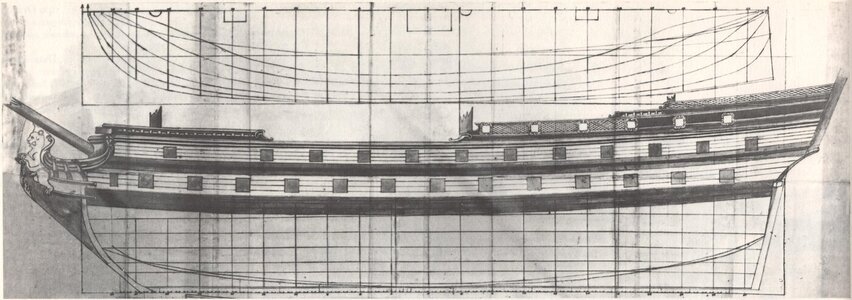
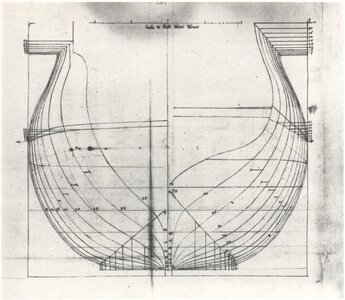
The method of determining the shape of the frames on the body plan (in earlier periods only on the mould loft in the shipyard, not on paper):
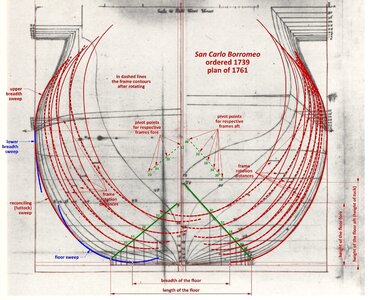
Those familiar with the subject should get an idea of the essence of the method used, but it is worth paying attention to the following details:
– before rotation, the contours of the frames were moved along the line defined by the length of the floor (as opposed to breadth of the floor); marked in green on the diagram above,
– the distance for the rotation of the frames was defined at the height of the line of greatest breadth, but applied much lower, more or less in the middle of the height of the futtock sweep (both groups marked with arrows in the diagram),
– in the fore half of the hull, the upper breadth sweep remained unchanged, while in the aft part their radius was reduced (not reconstructed in the attached drawing),
– the curvature of sweeps of the midship frame was selected in a way that makes it possible to apply the uniform, controlled transformation of the midship frame contours, proper to this method, along almost the entire length of the hull.
Hopefully for better clarity of the method employed, below as it is shown graphically by Mathew Baker around 1570 in the manuscript Fragments of Ancient English Shipwrightry:
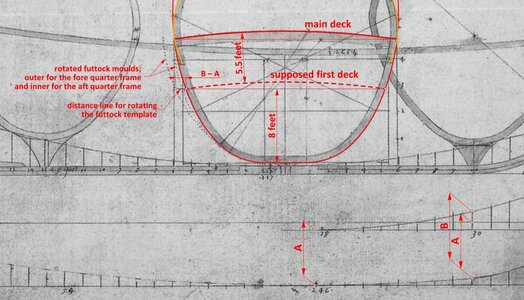
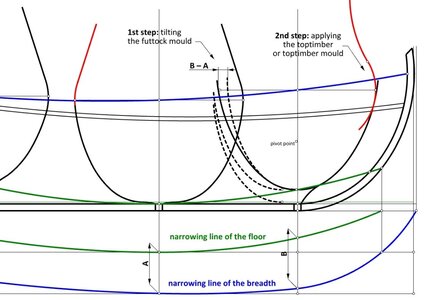
Thank you,
Waldemar Gurgul
.
Last edited:


